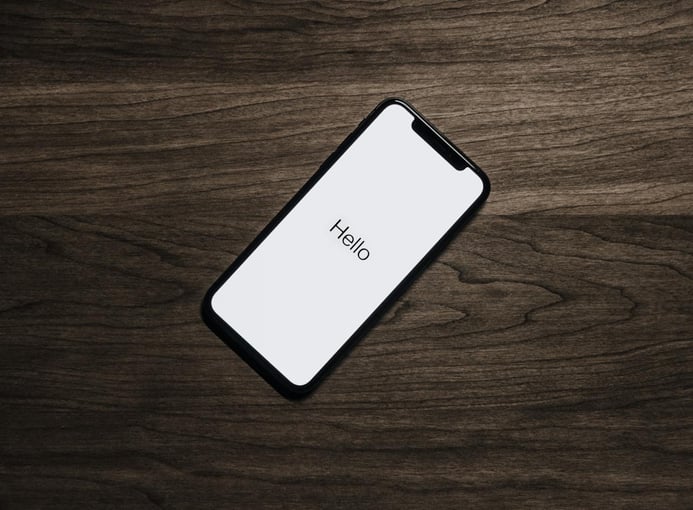The Middle East and North Africa (MENA) region is an area that brings together a culturally diverse population. That's why providing them with modern technology solutions requires having a good understanding of their needs and preferences. Working with participants in the local markets is one of the most inspiring experiences Railwaymen faces on a daily basis.What influences the success of technology projects in the Arab market? How should cooperation between two entities from different cultural backgrounds work? And, most importantly, how to create an application that will fit in with the demands of the people of the GCC region? I will try to answer these questions in the following text.
Table of Contents:
- Cultural Considerations: A Cornerstone of Success
- Attention to Detail during App Design
- Language Localization: Bridging the Communication Gap
- User-Centric Approach
- Mobile-First Design in MENA Landscape
- E-commerce and Marketplace Growth
- Cybersecurity and Protecting User Data
- Summary
Cultural Considerations: A Cornerstone of Success
We believe the most important aspect that determines success or failure when working across very large geographical distances is the ability of both teams to adapt to foreign cultural frameworks. We have had the opportunity to work with learn about different social norms, customs and religious traditions. This knowledge comes in handy not only when working directly with clients, but also when preparing dedicated solutions for their projects. Sometimes an app design that is the norm in the European region needs to be remodeled when present among Arab users, for example. That's why we ourselves try to understand all dependencies by participating in industry events in different regions of the world or by consulting with our foreign partners.

Attention to Detail during App Design
When working on the design of an app, we pay attention to such details as the color scheme, the symbolism that appears, as well as the considerations of the users of a particular region. Such procedures, although from the perspective of the entire project they seem like a drop in the ocean, determine the overall appeal of the application. Attention to detail can condition the success of a project. For example, in designing an app for the Arabic market, the direction of writing plays a key role. In Arabic, text is usually written from right to left. This means that user interfaces, buttons, menus and all content must be aligned with this direction. Ensuring that text and graphic elements are clearly and intuitively arranged from right to left is an important step in designing applications for this particular market.
Language Localization: Bridging the Communication Gap
Language localization is another aspect worth considering when designing an application. This is especially true if you want to venture into the Arab market. Adapting the application's content to the prevailing language in the country is not only a nod to the local culture, it is also a strategic business move to draw the attention of the audience to the content and services offered. Providing content in Arabic and other regional languages allows you to reach a wider audience, which can lead to more users and customers. The content should, above all, be free of any language errors. This will ensure that the application's content is properly understood by users and will not discourage them from using it.
User-Centric Approach
An app that is hard to use is an app you don’t want to use. App developers know this, and they go through all efforts to ensure that each user interface is designed in the most intuitive way possible. This is especially relevant for users who do not have advanced technological skills. For this reason, developing a universal interface dedicated to different types of users is no small challenge for developers. After all, the final product should satisfy every user regardless of his or her circumstances.

Mobile-First Design in MENA Landscape
The applications from Railwaymen are preceded by all sorts of analyses. A user from Poland may have completely different habits than a user living in the GCC region on a daily basis. One such observation, for example, is the huge popularity of consuming content via mobile devices in Arab countries. Therefore, it is better to focus on a mobile-first approach when working on an application. It allows you to prioritize the optimization of the app for smartphones, tablets and their technical capabilities. This means designing and optimizing the app for mobile platforms first, and then extending the experience to larger screens.
E-commerce and Marketplace Growth
We are keeping a close watch on consumer behavior and emerging trends, and one noticeable trend is the remarkable growth of e-commerce and various marketplace applications. However, merely observing these trends is just the beginning. The other essential aspect involves drawing informed conclusions. Having a platform that enables seamless shopping is necessary but insufficient. App owners must also strategize wisely to not only establish themselves in the market but also secure a lasting presence.

Cybersecurity and Protecting User Data
In an era of digital transformation, data privacy has become an overriding issue for app users in the Arab world. It is critical to protect user data and ensure compliance with strict privacy regulations. Before competing for users, it is important to consider all scenarios to maintain trust from users, including transparent data processing, robust consent mechanisms and GDPR compliance. By prioritizing data privacy, app developers can build trust and loyalty among their users in the Arab market. As digital threats continue to evolve, ensuring the cyber security of mobile apps has become a top priority. Railwaymen places a high priority on cyber security when designing apps in order to give our customers and their users peace of mind about their data when using products that we design..
Summary
Entering the Middle East and North Africa (MENA) market offers incredible opportunities, but also requires a deep understanding of the region's unique cultural, linguistic and technological landscape. By prioritizing cultural sensitivity, linguistic localization, intuitive user interfaces and a mobile-based approach, app developers can create solutions that resonate with Middle Eastern and North African audiences. Staying abreast of market trends, especially the rise of e-commerce and marketplace apps, is critical to long-term success. Moreover, emphasizing data privacy and robust cybersecurity measures demonstrates a commitment to user trust and security. As the MENA region continues its digital transformation, app developers who navigate this diverse market with care and diligence are poised for success and lasting loyalty from their users.
If you want to see how the described issues work in real projects, I encourage you to visit our Case Studies. In the link below you will find examples of Railwaymen applications developed for clients in the MENA area. Find inspiration to design a User-Centric application that will change the landscape of your business environment.


%20(1).jpg)



